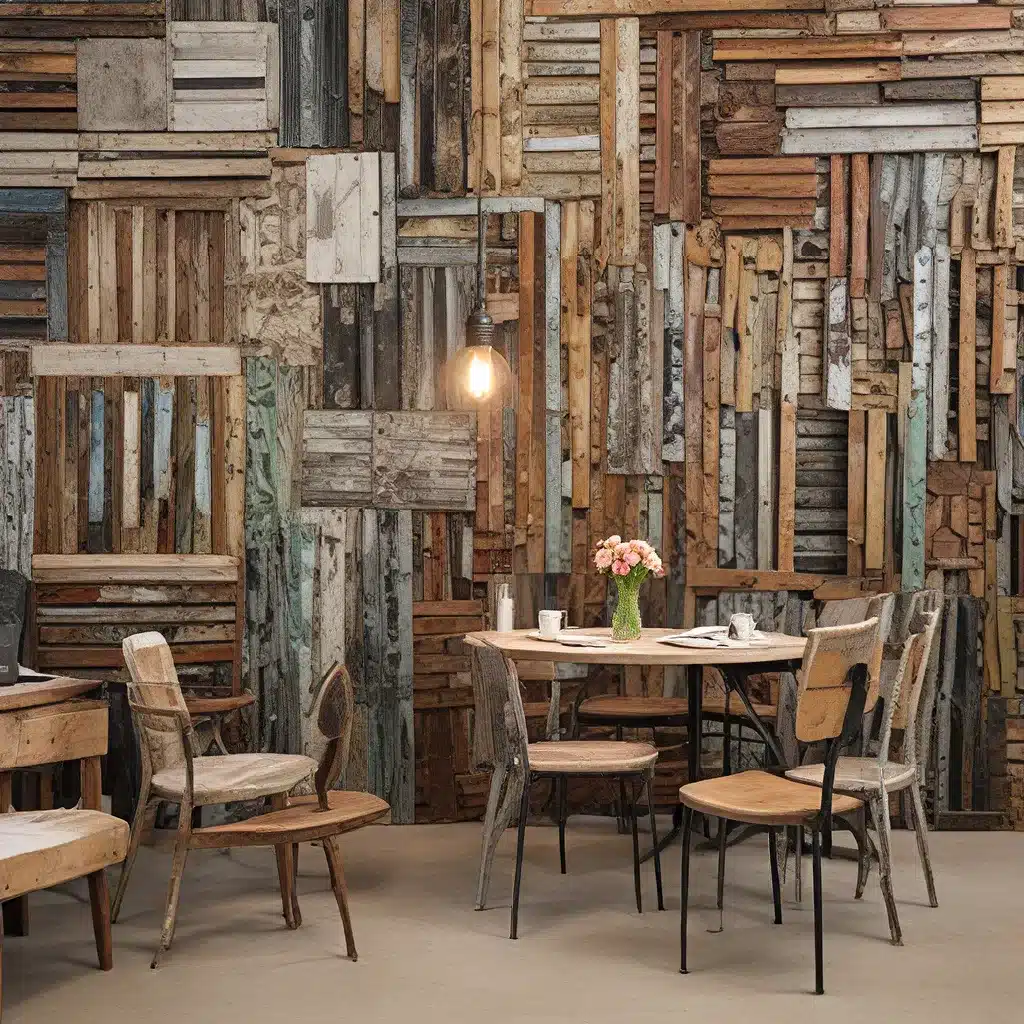
In the ever-evolving world of interior design, the pursuit of beauty and functionality often goes hand-in-hand with a growing emphasis on sustainability and environmental consciousness. As conscious consumers seek to make more mindful choices, the concept of upcycling has emerged as a shining beacon in the realm of home decor and lifestyle.
Embracing the Beauty of Repurposed Materials
Upcycling, the process of transforming discarded or waste materials into new, higher-value products, has become a game-changer in the design industry. By giving a second life to seemingly ordinary items, designers and homeowners alike are discovering the hidden radiance within reclaimed materials, creating spaces that are not only visually captivating but also environmentally responsible.
One of the most alluring aspects of upcycled design is the inherent uniqueness it brings to a space. Each repurposed item carries with it a story, a history that becomes woven into the fabric of the interior. From reclaimed wood furniture to vintage light fixtures, these design elements inject a sense of character and personality that mass-produced pieces often lack.
Sustainably Chic, a leading authority on sustainable living, has highlighted the growing trend of upcycled beauty products, where discarded materials like coffee grounds, fruit pits, and olive leaves are repurposed into luxurious skincare and wellness offerings. This innovative approach not only reduces waste but also showcases the inherent beauty and functionality of these unexpected ingredients.
Sustainable Design Strategies
Beyond the aesthetic allure, the practice of upcycling in interior design serves a deeper purpose – the pursuit of sustainability. As homeowners and designers become increasingly conscious of their environmental impact, the demand for eco-friendly design solutions has surged.
One remarkable example of sustainable design is the use of recycled felt from decommissioned uniforms and old textiles, as highlighted by MOYU. By repurposing these materials into practical and stylish notebook sleeves, MOYU not only gives new life to discarded textiles but also offers a tangible solution for reducing waste in the stationery industry.
Similarly, the concept of circular design, where materials are continuously reused and recycled, is gaining traction in the world of interior design. Brands like BYBIs are leading the charge by incorporating upcycled pumpkin enzymes and plum kernels into their skincare and beauty products, demonstrating the potential for waste materials to be transformed into luxurious, sustainable offerings.
Mastering Space Planning and Luxury Touches
As the demand for sustainable design continues to rise, interior designers are embracing innovative strategies to create personalized, functional spaces that seamlessly incorporate upcycled elements. Through careful space planning and the incorporation of luxury touches, these professionals are elevating the concept of sustainable design to new heights.
One key aspect of successful upcycled design is the ability to strike a balance between form and function. By thoughtfully repurposing materials, designers can create multifunctional furnishings that not only serve a practical purpose but also become captivating focal points within a room. A reclaimed wood dining table, for instance, can anchor a space with its rustic charm while providing a gathering place for family and friends.
The integration of luxury finishes further elevates the upcycled design experience, blending the raw beauty of repurposed materials with the refined elegance of high-end accents. From polished brass hardware to sumptuous velvet upholstery, these luxurious touches infuse a sense of sophistication and indulgence into the sustainable narrative.
Personalizing Your Upcycled Oasis
As homeowners seek to create their own personalized oasis, the opportunity to embrace upcycled design becomes a powerful tool for self-expression. By carefully selecting and incorporating reclaimed materials, individuals can craft a space that not only reflects their unique aesthetic preferences but also aligns with their values of environmental consciousness.
Whether it’s repurposing vintage light fixtures, incorporating salvaged wood into custom shelving, or adorning a room with upcycled textiles, the possibilities for personalization are endless. The very act of upcycling allows homeowners to become active participants in the design process, imbuing their living spaces with a tangible sense of authenticity and meaningful storytelling.
Embracing the Future of Sustainable Design
As the world continues to grapple with the pressing need for sustainable solutions, the design industry has emerged as a powerful catalyst for change. The embrace of upcycling in interior design not only satisfies the growing demand for eco-friendly, luxury-inspired spaces but also serves as a testament to the ingenuity and resourcefulness of designers and homeowners alike.
By harnessing the radiance of reclaimed materials, we can collectively contribute to a more sustainable future, one where beauty, functionality, and environmental responsibility converge to create truly remarkable living spaces. So, let us raise a glass to the sustainable chic that upcycling has brought to the realm of interior design, and let it inspire us to continue pushing the boundaries of what is possible.

